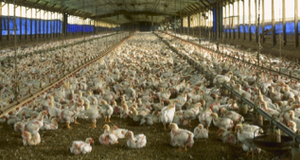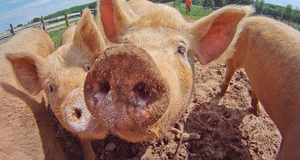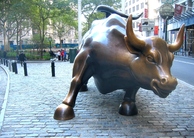Commercialization and Discontent on the American Farm: The Farmer's Movements of the Late-19th and Early-20th Centuries
By
2017, Vol. 9 No. 10 | pg. 1/1
KEYWORDS:
During the periods of the Agrarian Revolt and the 1920s, farmers were unhappy with the economic conditions in which they found themselves. Both periods witnessed the ascent of political movements that endeavored to aid farmers in their economic distress, such as the Populist movement in the late 19th century and the McNary-Haugen legislation in the early 20th century (North, 1966, p. 137; Johnson, 1973, p. 192). These facts, and the corresponding political impact, reveal authentic and genuine frustrations on the side of the farmers (Atack & Passell, 1994, p. 424). Nevertheless, the Agrarian Revolt puzzles economic historians because several of the supposed primary causes fail to align with the historical facts. This has prompted some economic historians to delve deeper into the fundamental source of the farmers’ unhappiness, which has resulted in findings that suggest the influence of commercialization was at the heart of the real issue (Mayhew, 1972, pp. 469-475). The causes of the farmers’ despondency in the 1920s undoubtedly differs and yet resembles the Agrarian Revolt in various superficial details; nonetheless, the ultimate cause of the problem remains the same- commercialization, which had proven once again that farmers were “no longer exempt from the pressures and consequences of changes in that economy” (Mayhew, 1972, p. 475). Throughout the last half of the 19th century, farmers were deeply unhappy with their conditions. They believed that their undesirable state was the result of exploitation, which inhibited the farmers from enjoying adequate returns for their hard work. Specifically, farmers complained that freight rates were unfairly high, prices of their crops were falling, and the interest rates charged by moneylenders were excessive. They alleged that the railroad companies, business intermediaries, and the banks were exploiting them through monopolistic practices. The anger that farmers felt towards those they blamed for their supposed plight was undoubtedly genuine. This is clear by the fact that numerous political movements arose that sought to alleviate the farmers from the economic pressure (Atack & Passell, 1994, pp. 419, 424).However, few of the accusations made by the farmers during the Agrarian Revolt receive factual support. The claim that railroad companies were victimizing farmers is unfounded, considering that the evidence indicates that rates were actually falling (North, 1966, pp. 139-140; Atack & Passell, 1994, p. 422). This is verified by the convergence of prices received by farmers. For example, in 1871, farmers in Minnesota received only 74 percent of the average United States’ price for their goods, while in 1891, the percentage rose to 95 percent (Zapoleon, 1918, p. 27). The banks and moneylenders were not, as the farmers maintained, charging absurdly high interest rates. Instead, the rates were decreasing due to increased competition (Higgs, 1971, p. 97-98; Atack & Passell, 1994, pp. 422-423). Therefore, considering the lack of substantiation, the real source of the farmers’ frustration during the Agrarian Revolt, as stated earlier, must lie elsewhere. The source of the farmers’ anger, according to Mayhew (1971), was the new system of commercialization. This system resulted in the farmers’ dependence on markets, credit, and especially prices, which, asserts Mayhew (1971), had previously not been vital “given the high degree of self sufficiency” enjoyed by farmers (p. 472). Mayhew (1971) specifically argues that the fundamental source of the farmers’ anger was that they “were objecting to the increasing importance of prices,” which their success had become dependent upon (p. 472). This was particularly disturbing to the farmer because his personal success was now contingent on factors entirely beyond his control and was something hard work could no longer guarantee. Along with the farmer’s impression of a loss of self-determination, he “found himself competing in a world market in which the fluctuation of prices made no apparent sense to him” (North, 1966, p. 142). North (1966) states that farmers’ incomes were no longer safeguarded from natural disturbances, such as droughts, by a rise in prices. Prices would remain low due to the importation of crops from other countries around the world, which often resulted in enormous reductions in the farmers’ incomes (North, 1966, p. 142). Hence, the real source for the Agrarian Revolt was commercialization, and the farmer’s anger was ultimately caused by the fact that “he was locked into a system where his success or failure now depended on prices” (Mayhew, 1971, p. 475). Similarly to the Agrarian Revolt, farmers in the 1920s also complained regarding their economic conditions, and the time period witnessed the formation of new political movements that sought aid for the struggling farmers (Johnson, 1973, p. 192). It seems reasonable to wonder whether there may indeed have been a fundamental similarity between the causes of the farmers’ anger in both the late 19th century and the 1920s. The agricultural crisis in the 1920s was largely the result of financial commitments made during the land boom following World War I. According to Atack and Passell (1994), the United States’ economy was strengthened by Europe’s increased demand for its crops (p. 563). This is evidenced by the fact that wholesale prices midway through 1919 were more than twice as high as they were in 1913, which was partly the result of the increase in demand for American products (p. 556). Atack and Passell (1994) also argue that the United States enjoyed a trade balance with a $4.9 billion surplus in 1919 (p. 563). These were both the product of the devastating effect that the Great War had on Europe’s agricultural sector. By the end of the war, “much of Europe was close to starvation,” especially central Europe, which had been particularly hard-hit (Atack & Passell, 1994, p. 563). During this time, U.S. farmers were flourishing from this increased reliance on their products. The per capita net income of the farm population in 1919 more than doubled from where it had been in 1913 (Johnson, 1973, p. 176). In 1920, the value of farm real estate had practically doubled from its price in 1912 (p. 176). The price of farmland was chiefly determined by the expected future income that could be collected from the land. Considering the vast recovery and reconstruction that Europe confronted following the war, it is no wonder that American farmers and land buyers expected the future income made from farmland to be rather high and continue to rise (Johnson, 1973, p. 180). This optimistic expectation led farmers and land buyers to continue investing heavily in farmland even though it was at historically high prices (p. 180). Therefore, because of the high prices of land, farmers became increasingly indebted. This is demonstrated by the total farm mortgage debt, which steadily rose throughout this period and finally peaked around 1923. Junior mortgages, which were second mortgages in addition to the primary mortgages, also substantially increased throughout the boom period before 1920. This enabled land buyers to purchase farmland at its high price; nevertheless, as stated above, they became profoundly indebted. Johnson (1973) states that the occurrence “between 1918 and 1920 is one of the more spectacular episodes of rising expectations…in American history” (p. 178). The expectation of continued agricultural flourishing in the United States was soon proved erroneous, however, once it became apparent that Europe’s agricultural sector was recovering much quicker than anticipated. This unexpected recovery had a devastating impact on the value of American farmland and, therefore, the heavily indebted farmers. By the year 1920, the value of farm real estate began falling from the height it had reached during the post-war land boom. In just 5 years after 1920, the price of land had fallen nearly 26 percent (Johnson, 1973, p. 176). As stated above, the value of farmland was determined by the expected future income that could be made from the land. This was anticipated to be quite high due to projected long-term slow recovery rate of agriculture in Europe. However, once it was clear that European agriculture was recovering rapidly, the expected future income of American farmland, which had factored in the expected reliance of Europe on American farm products, began decreasing (Johnson, 1973, p. 179). The consistent and relentless fall in the value of land relative to mortgage payments resulted in high rates of farm foreclosures (Atack & Passell, 1994, p. 575). In 1920, the average number of farm foreclosures per 1,000 farms was around 3.8. By 1926, this number had risen to 17 farms per 1,000 (Johnson, 1973, p. 176). As the value of land continued to fall, farmers “faced the demoralizing and depressing experience of sustained capital depreciation” (Johnson, 1973, p. 182). This was particularly upsetting to farmers, as Johnson (1973) notes, because “capital gains had been an important part of lifetime income” for them (p. 182). The postwar boom with the rise in land values only bolstered this expectation. Farmers who were heavily indebted, which were many, had to watch “their equity wither away” and “many faced bankruptcy or foreclosure solely because of shrinking land values” (Johnson, 1973, p. 183). It is important to note, however, that after farmers’ incomes took the huge hit in 1921, they began to gradually surge upwards again, while the value of land continued descending. This is, admittedly, a bit odd considering that the value of land was principally determined by the expected future income from that land. Therefore, it seems reasonable to inquire why land prices would not have increased from their low 1921 base along with income? As Johnson (1973) hints at throughout his article, the details of the situation in the 1920s reveal that the divergence of farmers’ incomes and land values was a consequence of the groundwork lain during the optimism of the land boom. Clearly, the demand for farmland decreased because it became obvious that Europe would no longer be dependent on American agriculture, which caused a decrease in the price of farmland. Farmers surely adjusted their expectations once they recognized this, although it is doubtful that junior mortgagees made the same correction. The farmers’ readjustment can be seen in the continued fall in the price of land. This could have been due to many farmers deciding to abandon farming all together, which would have resulted in a steady decline in the demand for farmland. Additionally, this would have marked a correspondingly steady and continuous decline in the price of farmland as more farmers followed suit. This is corroborated by the sharp rise in farm foreclosures (Johnson, 1973, p. 176; Atack & Passell, 1994, p. 575-576). Many of these foreclosures may have been the result of farmers deciding to default on their payments, bearing in mind that they were so heavily indebted and the value of land was continuing to fall. The mortgages, which were made during the land boom at the height of the rise in land prices, were astronomically steep. Even though farmers’ incomes began to ascend after the plummet of 1921, this would still have been insufficient to allow the repayment of the high mortgages and the prices that junior mortgagees were possibly upholding. Johnson (1973) notes that junior mortgagees would often foreclose on land and simply repay the interest rates on the first mortgage hoping that the value of land would stop falling and return to its post war boom level (p. 186). The level of indebtedness supports this theory, which remained high and did not begin decreasing until around the mid 1920s (Johnson, 1973, p. 176). This may indicate the moment when the junior mortgagees finally accepted the reality that land values would not be returning to their previous heights, therefore, they ceased only paying the interest and commenced paying off the actual mortgage. Another, and slightly different, explanation for why land prices fell while farmers’ incomes rose is because the fall in land prices in 1921 was not as great as it should have been and, thus, land remained overpriced. This might have been due to the actions of junior mortgage holders at the very beginning, which could have inhibited a price decline. Johnson (1973) mentions that appraisals were used rather than market value as the basis for granting mortgages. Appraisals were only completed periodically, not every year. Consequentially, they lag changes in the property values. When those values were falling, they would have consistently been too high. Thus, the extra mortgage money spent by farmers could have assisted in keeping prices higher than they should have been, just as the granting of excessive mortgages contributed to rising home values until 2008, during the United States’ recession of 2007-2009. Considering these reasonable possibilities, they would have undoubtedly impacted the behavior of farmers. Perhaps farmers felt as if there was no other alternative but to leave farming or at least default on their payments and, therefore, lose their farms. Thus, the economic hardships that confronted farmers of the 1920s were the consequences of the undesirable behavior of land prices. The fall in the price of land during the 1920s was completely beyond the control and influence of the farmer. This unexpected price behavior was the chief cause of the agricultural crisis in the 1920s, and, thus, the anger that farmers felt. Clearly, this suggests an important similarity between the Agrarian Revolt of the late 19th century and the crisis of the 1920s. In both time periods, farmers faced undesirable changes that were the result of prices. Prices, which they observed during both phases, were the deciding factor regarding whether they succeeded or failed as farmers. A clear difference between the two situations is the element of understanding. During the Agrarian Revolt, farmers would observe prices change in ways that contradicted their expectations from past experiences (Higgs, 1971, pp. 99-100; Johnson, 1973, p. 178; Hoffman, 1991, p. 397). Therefore, as stated earlier, price changes in the new competitive market were beyond their understanding. In the 1920s, however, farmers quite possibly had had enough time to accept the new fact that prices often behaved in unexpected ways. Compared to the Agrarian Revolt, the fall in the price of land during the 1920s was indeed unexpected, but remained within the capability of the farmer to comprehend, which was induced by Europe’s quicker than anticipated agricultural recovery rate. Angry farmers in the late 19th century were predominately focused on the undesirable behavior of commodity prices, while in the 1920s, their focus was on the undesirable behavior of the price of land. Nevertheless, in both periods farmers were distressed by and angry at the centrality of prices in causing the poor agricultural conditions in which they found themselves. Thus, the centrality of prices in determining whether a farmer succeeded or failed, which is an aspect of commercialization, reveals a fundamental similarity between the source of the farmers’ anger throughout both the Agrarian Revolt and the 1920s. Commercialization resulted in farmers’ dependence on markets and, consequently, prices regarding their success or failure. This aspect of commercialization was particularly disturbing for the farmer when prices behaved in ways that caused him economic distress, whether it was a fall in commodity prices and income, such as was the case during the Agrarian Revolt, or if the price of land unexpectedly fell while farmers remained heavily indebted and unable to repay their mortgages, such as was the case during the 1920s. The cause of the farmers’ unhappiness in the 1920s, therefore, was fundamentally the same as that of the late 19th century-commercialization, which seized the control that a farmer had over his own fate and laid it at the silent and dispassionate mercy of prices. ReferencesAtack, J., & Passell, P. (1994). A New Economic View of American History (2nd ed.). New York, NY: W. W. Norton & Company. Higgs, R. (1971). The ups and downs of the farmer. The Transformation of the American Economy. John Wiley & Son. Hoffman, E., & Libecap, G. D. (1991). Institutional choice and the development of U.S. agricultural policies in the 1920s. The Journal of Economic History, 51(2), 397-411. Johnson, H. T. (1973). Postwar optimism and the rural financial crisis of the 1920’s. Explorations in Economic History, 11(2), 173. Mayhew, A. (1972). A reappraisal of the causes of farm protest in the United States, 1870-1900. The Journal of Economic History, 32(02), 464-475. North, D. C. (1966). Agrarian discontent-the plight of the farmer, 1865-1900. Growth and Welfare in the American Past: A New Economic History. Prentice Hall. Zapoleon, L. B. (1918). Geography of wheat prices. U. S. Department of Agriculture, Bulletin Number 594. Washington: GPO, p. 27. Suggested Reading from Inquiries Journal
Inquiries Journal provides undergraduate and graduate students around the world a platform for the wide dissemination of academic work over a range of core disciplines. Representing the work of students from hundreds of institutions around the globe, Inquiries Journal's large database of academic articles is completely free. Learn more | Blog | Submit Latest in Economics |


















